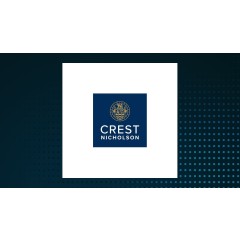
President Donald Trump arrived in Japan on July 10, 2023, as part of his Asian tour, which aims to strengthen business ties and address pressing trade issues. During his flight to Tokyo, Trump expressed optimism about finalizing a trade agreement with China before returning to Washington, D.C. His first meeting in Japan will be with Sanae Takaichi, Japan’s new Prime Minister, who is keen to cultivate a positive relationship with the U.S. leader to ease ongoing trade tensions.
Takaichi, who assumed office just a week prior, faces the challenge of navigating a fragile coalition while aiming to establish her diplomatic credentials. Trump praised her connection to former Prime Minister Shinzo Abe, noting, “I hear phenomenal things about Takaichi. It’s going to be very good. That really helps Japan and the United States.”
Following his arrival, Trump’s schedule includes a meeting at the Imperial Palace with Emperor Naruhito, Japan’s ceremonial head of state. The American president spent the previous day in Malaysia, where he attended a regional summit of Southeast Asian nations and initiated preliminary trade agreements with Malaysia, Thailand, Cambodia, and Vietnam.
During his flight to Japan, Trump indicated that he expects a substantial trade agreement with China to be reached shortly. “I think we’re going to come away with a deal,” he stated. This anticipation aligns with discussions between U.S. and Chinese officials, who reported reaching an initial consensus for Trump and Chinese leader Xi Jinping to finalize during their upcoming meeting.
Scott Bessent, U.S. Treasury Secretary, confirmed on the program “Face the Nation” that a deal involving the social media platform TikTok is also set to be finalized during the Trump-Xi meeting. After Japan, Trump will conclude his Asian tour in South Korea, where he plans to meet Xi on the sidelines of the Asia-Pacific Economic Cooperation (APEC) forum.
During his remarks, Trump expressed a willingness to extend his stay in Asia if there was an opportunity to engage with North Korean leader Kim Jong Un. Despite previous attempts to reconnect having gone unanswered, Trump stated, “If he wants to meet, I’ll be in South Korea.”
In discussing his political future, Trump dismissed the notion of running for vice president as a way to return to the presidency, saying, “I’d be allowed to do it but wouldn’t because it’s too cute.” He acknowledged that while some, like Steve Bannon, have suggested he could serve a third term, he has not given it much thought. He did, however, express admiration for potential Republican candidates such as Marco Rubio and J.D. Vance.
Trump’s focus throughout this trip has been primarily on trade, emphasizing his “America First” vision. This involves leveraging tariffs as a tool to enhance domestic manufacturing and negotiate better international agreements. His authority to impose tariffs is currently under scrutiny, as he awaits a Supreme Court decision that could either affirm or limit his power in this area.
Overall, Trump’s Asia tour represents a critical moment for U.S. foreign relations, particularly in the context of trade agreements and regional security issues. The outcomes of his meetings will likely have significant implications not only for U.S.-China relations but also for the broader geopolitical landscape in Asia.






